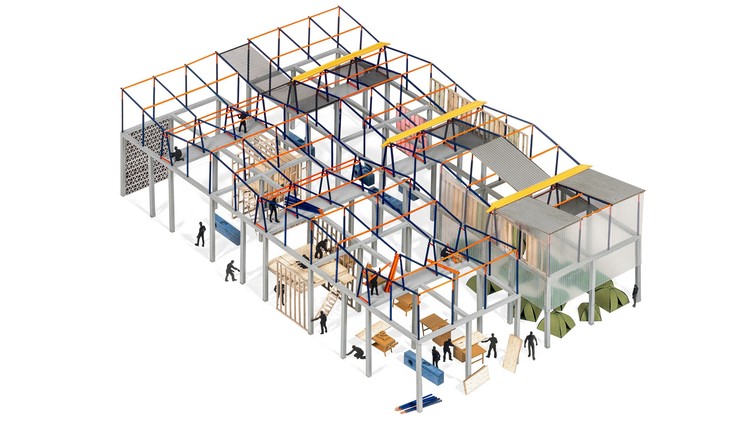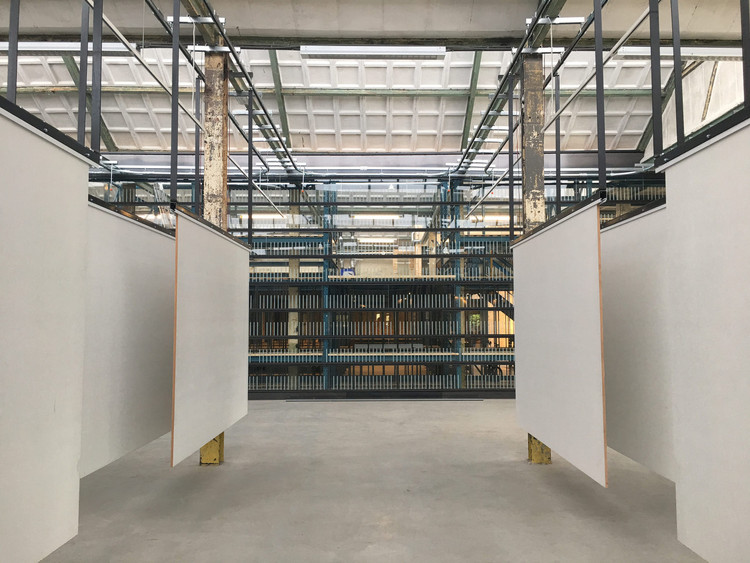
How materials move shapes both architecture and how we design. While architects often consider both material sourcing and manufacturing, the physical products and assemblies themselves also move and adapt as they cross geographic and national lines. How materials migrate, and in turn design ideas themselves, tells a story of architecture that transcends construction and climate, as well as borders both real and imagined.

The border condition between the United States and Mexico has become a prime example of how materials and architectural ideas can migrate and change across larger regions. This is a "region of flows" as Estudio Teddy Cruz + Fonna Forman states, disrupts conventional ideas of construction and material sourcing with a more encompassing lens. "We can elevate shared practices, norms, interests and aspirations as essential criteria of community – all of which, typically, flow unimpeded across border walls like ours" they said.

In their Manufactured Sites project, Estudio Teddy Cruz + Fonna Forman explores waste and material flows. Through a series of maquiladora assembly factories, the project is the result of a decade of research into the border between suburban San Diego and the shantytowns of Tijuana, Mexico. Essentially, it is a scaffolding system that allows Tijuana to achieve a greater level of density. The scaffolding functions as a frame upon which milk crates, tires, sheets of corrugated metal, rammed earth, and cinder blocks can be arranged, with a particular emphasis on vertical development.

As the studio notes, the system explores how the maquiladora industry contributes processes of prefabrication to produce surplus, micro-infrastructural support systems that reinforce informal housing in Tijuana. The Manufactured Sites proposal consists of a maquiladora prefabricated frame that acts as a hinge mechanism to mediate across the multiplicity of recycled materials and systems brought from San Diego and re-assembled in Tijuana. This small piece is also the first step in the construction of a larger, interwoven and open-ended scaffold. In turn, the frame questions the meaning of manufacturing, materials and housing in the context of building and sourcing.
When considering material migration, it's worth looking to systems that already transcend man-made borders. Unlike buildings, ecologies do no respect borders. They can develop across territories and engender complex systems operating at multiple scales. Over a decade ago, Swedish architect Magnus Larsson received the LafargeHolcim Prize for the idea to apply biotechnology to stop desert encroachment in Sokoto, Nigeria. This "dune anti-desertification" technique was created in response to the Green Wall Sahara initiative. Larsson describes how sand dunes in Northern Nigeria move southward at a pace of around 600 meters a year. In this way, the Sahara destroys almost two meters of arable land a day, as well as physically pushing people away from their homes.

The plan was to use microorganisms to bind loose sand into sandstone to create stable, dune-like formations and further the desert greening effort. Using Bacillus Pasteurii, he would solidify the sand and help curb the destruction caused by desertification. These dunes would protect new oases in which people displaced by desertification can live. Though its a conceptual approach, the side-effect of this large-scale, territorial idea is a "dune architecture" that crosses national borders. By looking at a broader issue and system in the Sahara, Larsson landed on a typology that rethinks the potential of regional architecture across countries.


Transitional material and architectural systems can be made of parts that support recycling, prefabrication and local investment. Like natural systems, great architecture is the product of circular construction processes. For Superuse Studios, sustainable design is rooted in a continuous cycle of creation and recreation, local material use and reuse. Viewing re-use as a circular design strategy, the studio is developing strategies for cities to connect different flows and integrate these systems into the existing urban environment.
For Superuse, the latent properties of used materials and products offer added value to new products and buildings. This applies to building materials as well as energy supplies, human resources, water, traffic and food cycles. Superuse distinguishes 14 different flows that enter and exit buildings and urban environments. They created several knowledge and exchange platforms ranging from material marketplace (Harvestmap and Pulsapp) and material environmental knowledge (woodguide.org) to an open source collection of knowledge on circular use of resource flows (cyclifier.org). These tools are open to other architects to support them developing their practice in construction when considering material migration and reuse.


Beyond physical manifestations of material movements, or large-scale ecologies and circular systems, there is also migration that is transforming material sourcing through climate change. As Ksenya Samarskaya notes, geographic migration paths are already streams where they’ll potentially be rapid rivers. "As the hardest-pressed and least stable regions get hit harder, people will need to leave. So, look not only at your chosen country in isolation, but also the neighboring ones as well, assuming some spillover effects" in the context of climate change and its socio-economic impact. These spillover affects will extend to material migration and the construction that's available in a given area.
Material migration will continue to shape the built environment. Through forces that are both examined and taken for granted, as well as factors of human occupation and tradition, we will continue to move to a future where architecture transforms through its material conditions.
This article is part of the ArchDaily Topic: Migration. Every month we explore a topic in-depth through articles, interviews, news, and projects. Learn more about our monthly topics. As always, at ArchDaily, we welcome the contributions of our readers; if you want to submit an article or project, contact us.










